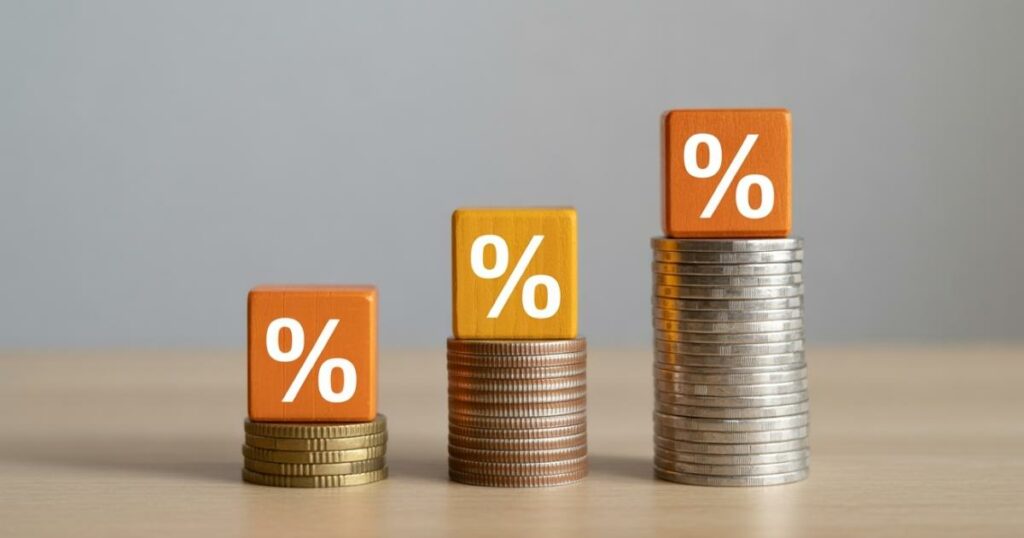
The latest minutes from the United States Federal Open Market Committee’s (FOMC) September session have reinforced expectations that the Federal Reserve will deliver additional interest rate cuts before the year concludes. This global policy direction has prompted speculation about whether South Africa’s Reserve Bank might follow suit when the Monetary Policy Committee (MPC) convenes for its final meeting in November. Yet, despite the potential window of opportunity created by the Federal Reserve’s easing path, local analysts remain doubtful that the South African central bank will act just yet.
Key Takeaways
- SARB adopts a tougher inflation stance: The South African Reserve Bank is informally steering toward a 3% inflation target, signalling a stronger commitment to price stability and stricter monetary discipline.
- Rate cuts now look less likely: Although earlier expectations pointed to a possible 25 basis point cut in November, the new inflation focus has reduced the odds of any immediate monetary easing.
- Long-term credibility, short-term pain: The tighter stance boosts investor confidence and strengthens the rand, but it also means consumers and businesses may face extended periods of high borrowing costs.
About Arcadia Finance
Get the financial support you need with Arcadia Finance. Access 19 reputable, NCR-compliant lenders with no application fees and a fast, secure process tailored to your budget and goals.
SARB Shifts from Pause to Precision as Inflation Target Tightens
This caution marks a noticeable shift from the atmosphere following September’s MPC meeting, when the Reserve Bank opted to keep rates steady. At that stage, the central bank justified its decision as a pause to gain a clearer picture of economic dynamics and to monitor the effects of the 175 basis points of cumulative rate reductions implemented since September 2025.
At that time, a growing number of economists viewed this as setting the stage for another modest 25 basis point cut in November, assuming inflation stayed comfortably contained within the target range. However, the outlook has shifted sharply. The Reserve Bank now appears to be orienting its policy stance toward an informal inflation goal of around 3%, significantly lower than the previous 4.5% midpoint focus. This adjustment has dampened hopes of imminent rate relief.
Tip: When central banks lower their inflation targets, it often signals a long-term commitment to price discipline, which can anchor investor confidence but slow down short-term growth. Consumers may experience this as persistent high lending rates, even when inflation appears manageable.
South Africa’s inflation targeting framework was first adopted in 2000, making it one of the earliest emerging markets to embrace this modern monetary policy tool. The midpoint target of 4.5% was considered “neutral” for most of the past decade, but the shift toward 3% represents a much tougher stance reminiscent of developed market central banks like the European Central Bank.

Inflation Targeting and Policy Outlook
Economists broadly interpret this new target as an implicit commitment by the South African Reserve Bank to hold a tighter monetary stance until inflation aligns more closely with the lower end of the 3% to 6% target band. Market watchers suggest that the bank may resist further easing until there is concrete evidence that inflation has stabilised near 3%, underscoring the Reserve Bank’s increasingly conservative posture.
Bloomberg Economics’ lead analyst Yvonne Mhango has observed that the Reserve Bank appears determined to maintain a firm hold on rates to safeguard its more rigorous 3% inflation objective. Inflation is projected to rise to just below the midpoint of the official target range by the end of 2025 and remain there through 2026, suggesting a lengthy period of price stability but little immediate room for easing.
The central bank is expected to keep the repo rate anchored at 7.0% throughout this year and into next, preserving its credibility as an inflation-fighting institution. This approach aligns with the Reserve Bank’s view that consistency and restraint are essential to guiding inflation expectations downward and maintaining investor confidence in its commitment to price stability.
South Africa’s current repo rate of 7.0% is among the highest real interest rates in the G20 when adjusted for inflation, which explains why the rand often performs better than expected despite weak domestic growth.
Differing Views Among Economists
Momentum’s chief economist, Sanisha Packirisamy, shares a similar assessment, believing that the Reserve Bank is unlikely to lower interest rates again during 2025. However, she maintains a slightly more positive outlook for 2026, anticipating that a combination of improved inflation dynamics and steady fiscal management could enable gradual easing in the following year.
Packirisamy expects inflationary pressures to edge higher in the latter half of 2025, presenting a short-term obstacle to the Reserve Bank’s lower inflation ambitions. She has noted that, while the government has not yet formally endorsed the revised 3% target, the central bank has been subtly steering market expectations in that direction through its public communications and policy commentary.
If fiscal authorities succeed in exercising discipline and inflation expectations respond favourably to the bank’s signalling, she argues that a limited round of policy easing could emerge toward the end of 2026. Nonetheless, this would be a cautious and incremental process rather than a broad-based cycle of rate cuts.
Economists refer to this kind of cautious signalling as “open mouth operations,” where the central bank influences behaviour simply by what it says, not by what it does. The SARB has mastered this art, keeping inflation expectations anchored even when markets anticipate cuts.
Tip: Businesses should take this period of policy stability as an opportunity to deleverage. Paying down expensive short-term debt now could offer breathing room when borrowing costs eventually decline in 2026.
Positive Implications for the Rand
Despite the cautious domestic tone, recent developments have provided some relief for the rand. Investec’s chief economist, Annabel Bishop, has suggested that there remains a slim but plausible possibility that the MPC might opt for a final 25 basis point reduction in November. However, she cautions that such a move is far from guaranteed, given the central bank’s strong emphasis on data dependency.
The Reserve Bank’s own predictive models continue to show limited space for another small cut in 2025, yet policymakers have repeatedly emphasised that their decisions are guided by real-time data rather than predetermined forecasts. The September MPC decision, in fact, reflected division within the committee: four members voted to hold rates steady, while two favoured a 25 basis point reduction.
Interestingly, the contrast between the United States’ expected rate cuts and South Africa’s more restrained stance has supported the rand. On Wednesday, the currency strengthened to R17.14 against the US dollar, buoyed by investor confidence in South Africa’s comparatively high yields and the Reserve Bank’s decision to keep the repo rate unchanged in September.
Historically, every 1% increase in the interest rate differential between the US and South Africa can strengthen the rand by as much as 3% in the short term, assuming global risk appetite remains steady. This is why traders closely track both the SARB and the Fed’s statements in tandem.

The Broader Interest Rate Dynamic
As the Federal Reserve prepares to implement a further 50 basis point reduction this year, the widening interest rate differential between the US and South Africa has become a significant factor in currency performance. Historically, such divergence tends to enhance the rand’s appeal to yield-seeking investors, as South Africa’s higher real interest rates offer an attractive return relative to developed markets.
This pattern has reasserted itself recently, with global investors responding positively to South Africa’s relatively conservative stance. Bishop has pointed out that the US Federal Reserve’s willingness to look past temporary, tariff-induced inflation spikes has also reassured markets, allowing capital to flow back into higher-yielding emerging market assets like the rand.
Within South Africa, however, the outlook remains more nuanced. While the Reserve Bank’s tight stance has helped stabilise the currency, domestic demand remains weak, and consumer confidence is subdued. Bishop believes that inflation is structurally moderating, and that these conditions, combined with interest rates that remain highly restrictive, could justify a measured reduction in borrowing costs next year.
In her view, the groundwork is being laid for a modest easing cycle, not in the immediate term but as part of a longer process to balance price stability with economic recovery.
Tip: If inflation continues its downward trajectory into 2026, consumers could start to see relief in bond repayments and retail credit rates, but only if the SARB believes fiscal spending is under control.
The SARB is one of the few central banks in Africa with a fully independent policy mandate, protected by the Constitution. This autonomy often frustrates politicians but reassures investors, who see it as a bulwark against reckless monetary experimentation.
Fun Fact: Since 1960, South Africa’s repo rate has been above 5% nearly 85% of the time. The country has never experienced a prolonged period of near-zero rates like Europe or Japan, which is why local households tend to be more cautious about taking on variable-rate debt.
Conclusion
South Africa’s monetary policy is clearly entering a new phase of discipline and restraint, with the Reserve Bank prioritising long-term price stability over short-term stimulus. The shift from a 4.5% midpoint focus to an informal 3% target underscores a broader effort to align local policy credibility with global central banking standards. While this approach is likely to strengthen the rand and curb inflation expectations, it also means that households, property owners, and businesses may need to brace for a longer period of elevated interest rates before meaningful relief materialises.
Fast, uncomplicated, and trustworthy loan comparisons
At Arcadia Finance, you can compare loan offers from multiple lenders with no obligation and free of charge. Get a clear overview of your options and choose the best deal for you.
Fill out our form today to easily compare interest rates from 19 banks and find the right loan for you.


